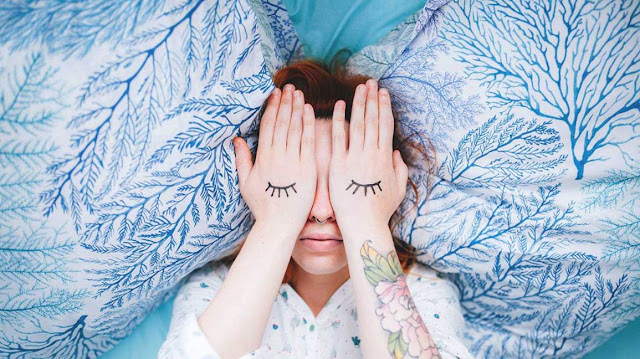The fastest way to sleep?
Want to Learn How to fall asleep?Spending more time trying to fall asleep rather than actually sleeping? You’re not alone.
Just the act of trying too hard can cause (or continue) a cycle of anxious, nerve-wracking energy that keeps our minds awake.
Articles you should read to help you know more on how to Fall Asleep:
- How I Learned to Sleep Only Three Hours Per Night (and Why You Should Too)
- How Exercise Affects Sleep
- How to Get on a Sleep Schedule
- The Science of Sleep: Why You Need 7 to 8 Hours a Night
- How to sleep 8 hours in 4 hours
And if your mind can’t sleep, it’s really difficult for your body to follow. But there are scientific tricks you can try to flip the switch and guide your body into a safe shutdown mode.
We cover some science-based tricks to help you fall asleep faster.
How to Fall Asleep in 10 seconds
It usually takes a magic spell to fall asleep this quickly and on cue, but just like spells, with practice you can eventually get to the sweet 10-second spot.
Note: The method below takes a full 120 seconds to finish, but the last 10 seconds is said to be truly all it takes to finally snooze.
The military method
The popular military method, which was first reported by Sharon Ackerman, comes from a book titled “Relax and Win: Championship Performance.”
According to Ackerman, the United States Navy Pre-Flight School created a routine to help pilots fall asleep in 2 minutes or less. It took pilots about 6 weeks of practice, but it worked — even after drinking coffee and with gunfire noises in the background.
This practice is said to even work for people who need to sleep sitting up!
If this doesn’t work for you, you may need to work on the foundations of the military method: breathing and muscle relaxation, which have some scientific evidence that they work. Also, some conditions such as ADHD or anxiety may interfere with this method’s effectiveness.
Keep reading to learn about the techniques this military method is based on and how to practice them effectively.
You can also read these:
How to Fall Asleep in 60 seconds
These two methods, which focus on your breathe or muscles, help you take your mind off topic and back to bed.If you’re a beginner trying these hacks out, these methods may take up to 2 minutes to work.
4-7-8 breathing method
Mixing together the powers of meditation and visualization, this breathing method becomes more effective with practice. If you have a respiratory condition, such as asthma or COPD, consider checking with your doctor before beginning, as this could aggravate your symptoms.To prepare, place the tip of your tongue against the roof of your mouth, behind your two front teeth. Keep your tongue there the whole time and purse your lips if you need to.
Progressive muscle relaxation (PMR)
Progressive muscle relaxation, also known as deep muscle relaxation, helps you unwind.
The premise is to tense — but not strain — your muscles and relax to release the tension. This movement promotes tranquility throughout your body. It’s a trick recommended to help with insomnia.
Before you start, try practicing the 4-7-8 method while imagining the tension leaving your body as you exhale.
As you do this, focus on how relaxed and heavy your body feels when it’s relaxed and in a comfortable state.
How to fall asleep in 120 seconds
If the previous methods still didn’t work, there might be an underlying blockage you need to get out. Try these techniques!Tell yourself to stay awake
Also called paradoxical intention, telling yourself to stay awake may be a good way to fall asleep faster.For people — especially those with insomnia — trying to sleep can increase performance anxiety.
Research has found that people who practiced paradoxical intention fell asleep faster than those who didn’t. If you often find yourself stressed out about trying to sleep, this method may be more effective than traditional, intentional breathing practices.
Visualize a calm place
If counting activates your mind too much, try engaging your imagination.Some say that visualizing something can make it real, and it’s possible this works with sleep, too.
In a 2002 study from the University of Oxford, researchers found that people who engaged in “imagery distraction” fell asleep faster than those who had general distraction or no instructions.
Acupressure for sleep
There’s not enough research to confidently determine if acupressure truly works. However, the research that’s available is promising.One method is to target areas you know and feel are particularly tense, such as the upper part of your nose bridge or your temples.
However, there are also specific points in acupressure that are reported to help with insomnia.
Here are three you can do without sitting up:
1. Spirit gate
2. Inner frontier gate
3. Wind pool
Prepare yourself fully before tackling these techniques
If you’ve tried these methods and are still finding yourself unable to fall asleep in 2 minutes or less, see if there are other tips you can take to make your bedroom a more sleep-friendly place.If you find the atmosphere in your room to be damaging to your sleep, there are tools you can use to block out the noise. Literally.
Try investing in blackout curtains, white noise machines (or listening to music with an auto-stop timer), and ear plugs, all of which you can buy online.
On the other hand, sleep hygiene, or clean sleep, is real and effective.
Before you truly take on the military method or 4-7-8 breathing, see what you can optimize to your bedroom for soundless slumber.








0 Comments